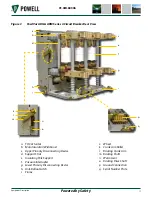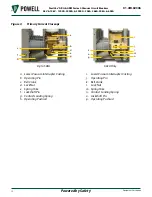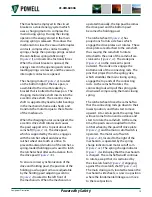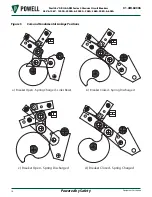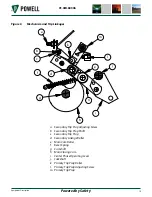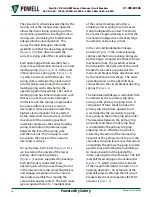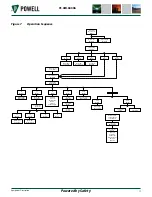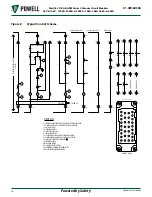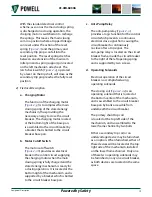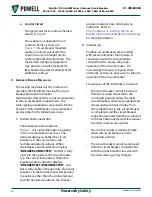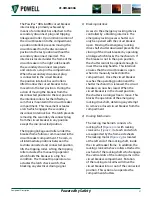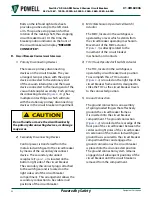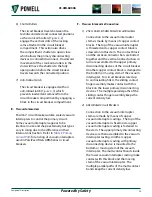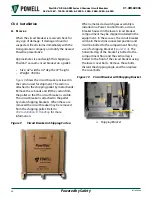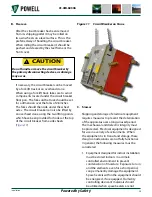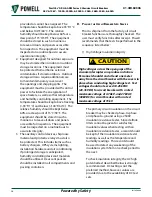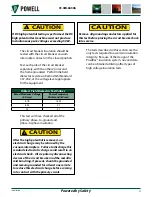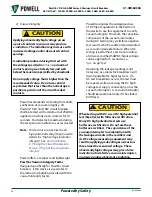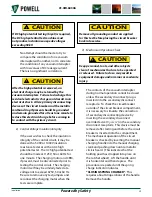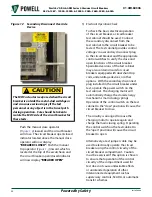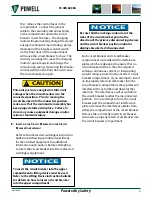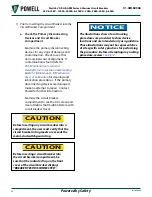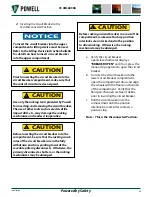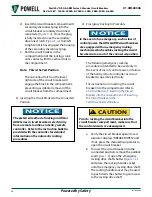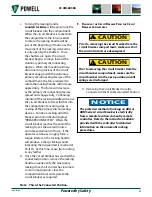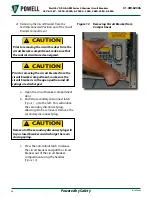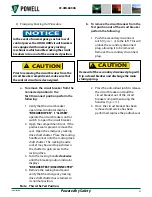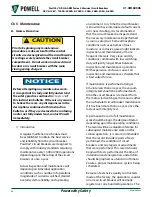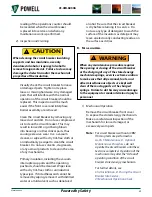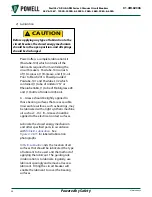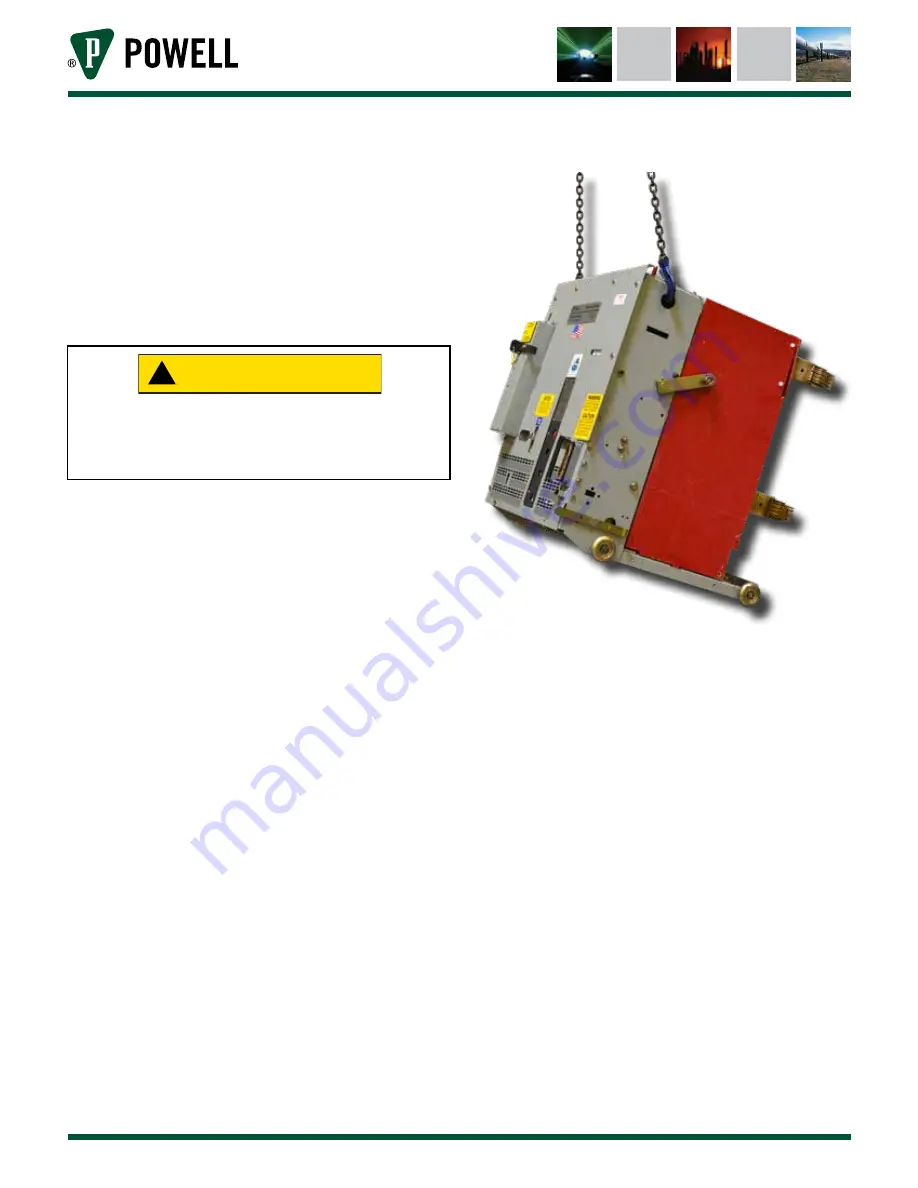
Powered by Safety
®
25
Installation
01.4IB.60306
B. h
AnDlInG
After the circuit breaker has been removed
from its shipping pallet it may be rolled on
its own wheels on a level surface. This is the
preferred way of handling the circuit breaker.
When rolling the circuit breaker it should be
pushed and steered by the steel frame or the
front cover.
Do not handle or move the circuit breaker by
the primary disconnecting devices, as damage
may occur.
!
CAUTION
If necessary, the circuit breaker can be moved
by a fork lift truck or an overhead crane.
When using a fork lift truck take care to avoid
components located under the circuit breaker
floor pan. The forks on the truck should be set
for a dimension over the forks of 28 inches.
The forks should then ride under the wheel
axles. The circuit breaker can also be lifted by
an overhead crane using the two lifting points
which have been provided for hooks at the top
of the circuit breaker frame side sheets
(
).
Figure 11 Circuit Breaker on Crane
c. S
torAGe
Shipping and storage of electrical equipment
requires measures to prevent the deterioration
of the apparatus over a long unused period.
The mechanical and dielectric integrity must
be protected. Electrical equipment is designed
for use in a variety of environments. When
the equipment is in transit and storage, these
design considerations are not fully functional.
In general, the following measures must be
considered.
1. Equipment designed for indoor installation
must be stored indoors in a climate
controlled environment to prevent
condensation of moisture. Exposure to rain
and the elements, even for a short period,
can permanently damage the equipment.
Space heaters within the equipment should
be energized, if so equipped. Humidity
controlling desiccant materials should
be utilized when space heaters are not

